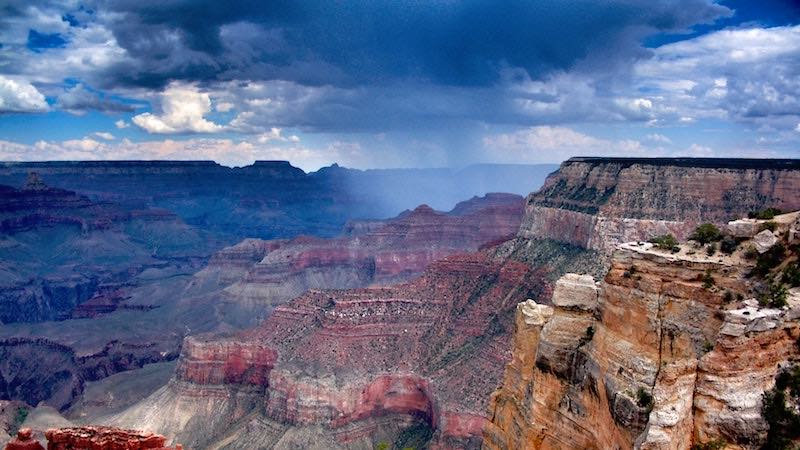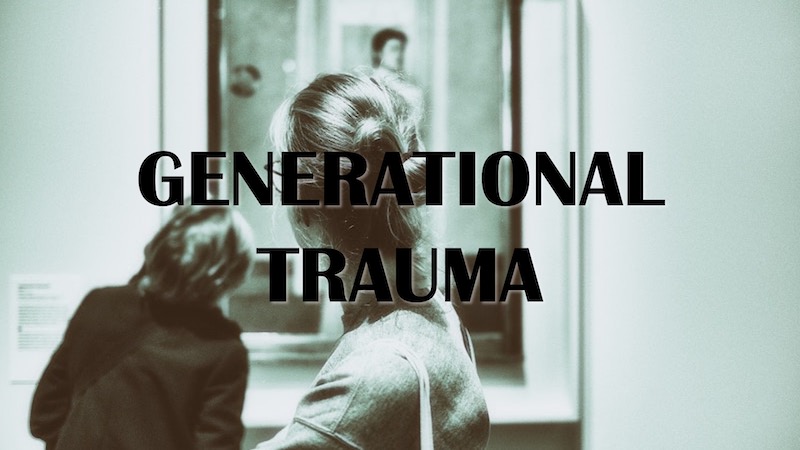The 3 layers of trauma – ancestral, generational, current-life
- 18 May 2020
- Posted by: Michael H Hallett
- Category: Ancestral trauma , Generational trauma , Mother wound ,

NOTE: This article has been superceded by Trauma exists as a series of ripples
When we set out to bring the contents of our unconscious to light, it feels like we’re dealing with one great morass of buried pain. It’s a bit like the three monkeys—hear no evil, see no evil, speak no evil. There are layers of trauma inside us that we can’t see, hear or describe… yet they manifests in our lives in a variety of destructive ways.
Carl Jung said, “Man’s task is to make conscious that which presses upward from the unconscious.” He’s right—but ‘that which presses upwards’ isn’t the most accurate of definitions.
In The Politics of Experience, psychologist R.D. Laing wrote that “What we call ‘normal’ is a product of repression, denial, splitting, projection, introjection and other forms of destructive action on experience.”
Layers of trauma
The ‘normal’ that Laing refers to is a combination of conscious and unconscious behaviour. As a laundry list of the contents of the unconscious he does at least give us a starting point.
Another way to assess the contents of our unconscious is by their origin. Here clarity begins to dawn.
Another way to assess the contents of our unconscious is by their origin. Here clarity begins to dawn. Everything that is traumatized within us can be categorized according to three possible sources.
- Current-life trauma
- Trauma inherited from our immediate ancestors
- Trauma inherited from our distant ancestors
1. Current-life trauma
Current-life traumas are the emotional wounds (and the coping mechanisms to manage them) you’ve acquired over the course of your life. These can range from high visibility, high impact traumas such as rape to low visibility—though not necessarily low impact—traumas.
For example, I grew up in a house with an angry father, which created a continuous sense of imminent, though not necessarily actual, danger that was ultimately traumatic.
2. Generational trauma
All inherited trauma can technically be described as ‘generational trauma’ or ‘ancestral trauma’. Throughout my site—and throughout this toolkit—I use each phrase with a specific meaning.
Generational trauma refers to unprocessed traumas acquired from our immediate ancestors—typically our parents and grandparents. They are unique to us and to our siblings.
Read more: What is generational trauma?
3. Ancestral trauma
Ancestral trauma refers to unprocessed traumas arising from the dawn of the patriarchal age that have been handed down through epigenetic inheritance ever since.
These ancestral traumas are common to all humanity, with specific overlays for different genders, races, classes, religions, nations, and any other form of differentiation. For instance, the ancestral trauma that applies to men is termed the ‘collective male unconscious’.
Read more: What is ancestral trauma?
Mother wound
Bringing the unconscious to light is the emotional equivalent of an archaeological dig, where we peel away layer after layer of sediment. We tackle these layers of trauma from the least painful to the most painful, the least compacted to the most compacted.
As we approach the lower strata of this dig, we approach the mother wound.
During the 1991 Gulf War, Iraqi leader Saddam Hussein memorably used the phrase, “The mother of all battles.” The ‘mother of all…’ construct has since been used in many ways.
Our society doesn’t have an accepted sense of some kind of mother wound that we all suffer from, individually or collectively. The reason is simple. It’s so painful that we’ve buried it under enough emotional concrete that we’re no longer aware of it. Through unawareness we avoid the responsibility for healing it.
Yet, if we embark upon a journey to wholeness, we eventually chip our way through that emotional concrete and encounter it.
When it comes to emotional wounds, the mother wound is “the mother of all wounds”. It accounts for our disconnection from our selves and from the planet. This in turn accounts for the state of the environment. Heal this wound and your life will change.
Next steps
For further resources on generational trauma, both free and paid, please click on this image.

